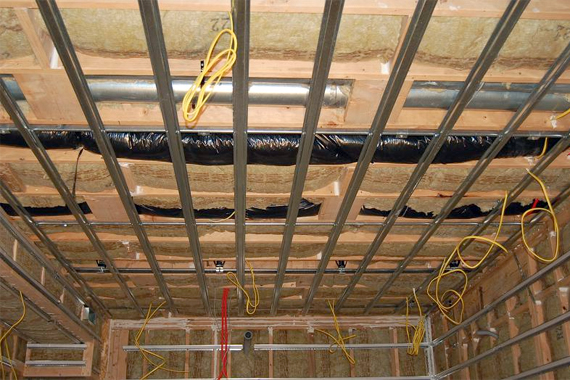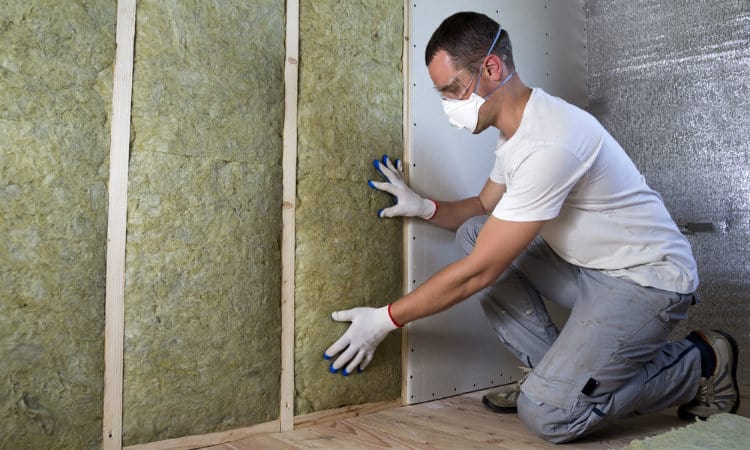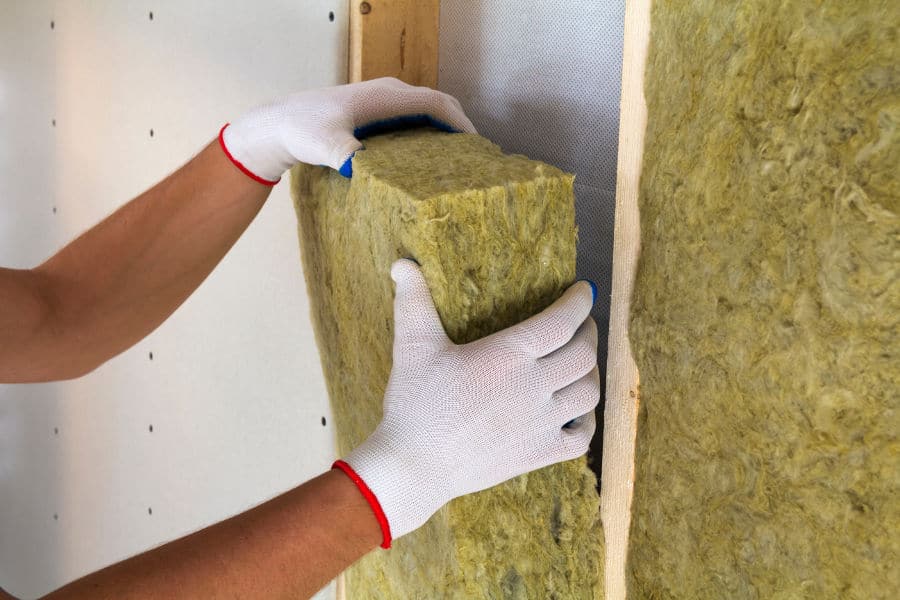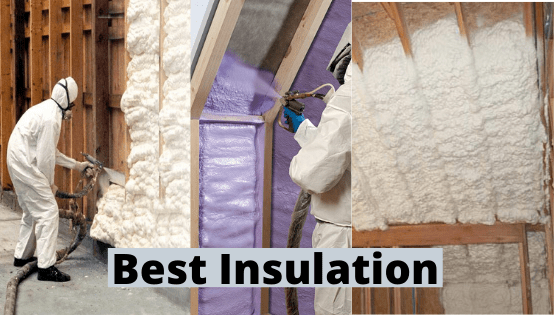All Categories
Featured
Table of Contents
- – The Best Way To Soundproof Your Home Or Office
- –
- – Best Soundproof Insulation Materials
- – Basics of Sound Transmission
- – STCs to Consider For Your Home
- – Insulation Noise Reduction
- – Soundproofing
- – Different Types Of Insulation
- – Fiberglass insulation
- – MultiPurpose transmission class (STCs) upto...
- – Batt Insulation
- – Foam Spray Insulation
- – Insulation
- – Roxul Rockwool Acoustical Mineral Wool I...
- – Acoustimac Eco Cellulose Insulation
- – Foam It Green Spray-Foam Insulation
- – Mineral Wool vs Fiberglass Insulation Bo...
- – Mineral Wool Panels vs Fiberglass Panels
- – Cellulose Vs Fiberglass Batts, Panels
- – Cellulose vs Roxul Rockwool
- – Cellulose vs. Spray Foam
- – Roxul Rockboard panels vs Rigid Foam
- – The benefits of soundproofing insulation
- – Move Electrical Boxes
- – Seal The Boxes
- – Insulate Your Walls
- – Doors
- – Absorption
- – Insulation made from mineral wool
- – Cellulose Insulation
- – How To Soundproof A Room In 5 Steps
- – How To Soundproof Your Room For Cheap (Best In...
- – Insulation For Soundproofing: Which Is The Bes...
- – 7 Cheap And Effective Methods For Soundproofin...
- – How To Soundproof Your Room With The Best Insu...
- – The Best Insulation For Soundproofing: How To...
The Best Way To Soundproof Your Home Or Office
A ceiling soundproofing can be a great way of preventing sound from entering your home. A ceiling soundproofing project is easy and inexpensive. Acoustic tiles and foam tiles can both be used to soundproof a ceiling. These are some helpful tips to help you install these products correctly.
Best Soundproof Insulation Materials
There are many different types of soundproof insulation materials that can be used to help insulate your home or office. But not all soundproof insulation materials are equal. Some materials are better at blocking out noise than others. However, some materials can be more expensive than others.
Noise Pollution is a major problem for many cities all over the world.
This mineral wool fiberglass insulation foamboard is great for your home. It can soundproof and retain heat, as well as protecting walls from moisture damage.
Every day, we are exposed to thousands of different noises in residential areas. These noises may be heard as impact, airborne, or flanking sounds. Sound frequencies in the 1000 Hz range are most noticeable to us. Sound insulation materials can be used to improve our comfort and our health.
Airborne sounds, sound waves that travel through an airspace, are sounds like vehicles, radios, conversations, and dogs barking. Toys and glass can also fall on the ground, and people may walk on wooden floors. Flanking noises travel from walls to ceilings, through floors and under walls. It can be difficult to control flanking noise and it takes time.
Basics of Sound Transmission
Sound is a pressure wave that travels through the air. Although it can be heard with the human ear, it cannot be felt or seen. Sound waves travel at different speeds according to their wavelength (the ).).
Sound waves travel through air at different wavelengths. They can be heard at distances of 17 mm to 17 m. You can also determine how loud they will sound by other factors than the distance between speakers. The louder they will sound, the larger the room and the more people there are,
Hertz can measure frequency. The Hertz measure frequency.
You can control sound waves by using materials that absorb or block them being transmitted. Many insulation materials are available, such as fiberglass, foam and paper. Different insulation materials can absorb different types of sound waves. Fiberglass, for instance, absorbs sound waves better that other materials due to its density.
A home that is quiet will have an average level of 40dB. Homes that are noisy will have over 100dB. More effective material will result in greater effectiveness.
STCs to Consider For Your Home
A quiet home should get a higher rating that STC40. STC 56 should apply to bathrooms and living areas. STC 60 should refer to kitchens.
Insulation Noise Reduction
Before you start construction, soundproof your home. This involves adding more layers to the drywall so that the sound waves are absorbed by the walls. However, if you are just starting a new construction project, and have no idea how to soundproof your house, we will give you some brilliant tips on the most effective ways of doing so.
There are many things you can do to ensure that your soundproofing job is done correctly. One of these is sound insulation. But what does it do? Sound insulation is an essential feature of any building or home. It helps to reduce noise levels and vibrations throughout the structure. Living in homes without soundproofing can lead to problems from vibrations caused by running motors, fans, and vibrating appliances, as well music played on radios and televisions.
Sound Dampening
Acoustic insulation is 80. Acoustic insulation has a rating of 80.
Insulation will increase your house's value by keeping heat out and keeping cold in. Drywall is a great way to reduce the noise from your house.
The drywall's support is provided by steel studs. Sound insulation may be increased up to 49% by using 5/8" instead of 1.
Soundproofing
However, fiberglass and drywall dominate the soundproofing market. Drywall is mostly used in older homes, but it's still a great option for those who want to increase their home's rating. Fiberglass insulation is gaining popularity due to its ability to reduce noise and increase energy efficiency.
Insulation may be either acoustic nor mechanical. To absorb sound waves and prevent vibrations affecting sensitive areas like floors or windowsills, mechanical insulation is foam, metal-studs and steel beams. It sounds easy enough, just add insulation! What is the best type of insulation?
Make walls, ceilings, floors and furniture sound less. They can trap sound waves, are porous and light.
Sound blockers are typically thick, heavy materials which reflect sound waves and prevent them from entering or leaving spaces. They can be found in ceilings and walls as well as doorways. Sound dampers are used to reduce vibrations that transfer through walls. They don’t transmit as much sound.
To reduce noise transfer from different rooms, isolation walls are used. Double-studs prevent sound from being transferred between rooms. Clips are used for isolating walls from one another.
Different Types Of Insulation
Mineral wool is a strong material that can be used as insulation. It is also used for sound absorption. Because it is porous and dense, it absorbs vibrations and sounds both from impact and airborne sources.
Fiberglass is an insulation type that is used for insulate homes.
Sound Control spray foam insulation is a type of polyurethane spray insulation that is sprayed on walls to insulate rooms. It can reduce noise levels by up to 90%
Extruded plasticstyrene may be used to create both blue and red foam boards. ISO panels are more efficient insulation than either the blue or pink foam board.
A panel made of polystyrene helps reduce noise in a room.
Fiberglass insulation
What is the best insulation? It all depends on what you are looking for in a home, how much money you have available and what features you need. It also depends upon what noise-reducing products you have at the moment. Companies have been trying to innovate to make their products more appealing than the ones offered by competitors. This has made the soundproofing industry more competitive. Manufacturers are able to use less material, but still produce quality products.
Electronic Sound Absorption and Cancellation (ESAC), systems convert electrical energy into acoustic, which is then transmitted through walls or ceilings to the originating sound source.
Fiberglass insulation may be made from melting plastic, and then spinning it into long strands. Fiberglass insulation will insulate homes because it allows heat to retain during winter and cold air to escape during summer.
A thicker batt can decrease the STC by approximately 1 point. This could be because sound waves travel further when batts have a thicker shell. Additionally, sound waves are reflected back to the source more often, increasing overall STC.
Fiberglass insulation offers flexibility. Fiberglass Insulation has a NRC rating at 0.85. R11 insulation is 0.95. R19 insulation is 1.
Fiberglass insulation is very efficient at keeping heat in your home.
Fiberglass Batts can insulate walls ceilings and roofs. Rigid batts can also be used around ductwork and walls to reduce noise transmission and echos.
Owens Corning has a pink, unfaced insulation roll measuring 23" x39", that can be used between beams, truss and studs. It adds 6 inches of insulation and has an R19 value. However, it can be mold and moisture-sensitive. If not compressed, it can improve sound absorption on floors and walls.
Owens-Corning 703 is a lightweight acoustic insulator that can be used in ceilings and walls. The insulation should be covered with acoustical fabric to keep the fibers from fluttering.
Owens Corning 2” thick Soundproofing Insulations have an density of 10.3 lbs/ft3 and an additional STC 18. This enhances the overall sound.
MultiPurpose transmission class (STCs) upto 53 It has a insulation value of 1. It is better at higher frequency than lower ones. However, low-frequency noises are still a concern.
Mineral Wool
Mineral wool insulation can be made from many different types.
Fiberglas insulation does not have a similar density or stiffer structure to mineral wool insulation. Mineral wool insulation is more dense and stiffer than fiberglas. It also has less potential to cause noise transfer or slouch. This also prevents sound transmission.
Acoustic tile is used to reduce sound and echo.
Batt Insulation
Batt insulation wraps around walls. You can choose from different thicknesses depending on your space.
This batt insulation can be used straight away. It could also have an effect on the product’s ability to soundproof or act like a thermal barrier.
Fiber glass is used to make batt insulation. It's made of fiber glass.
Mineral wool insulation is very popular because it is quick and easy to install.
Foam Spray Insulation
Polyurethane foam can be used to insulation odd-shaped spaces. But, most commonly it is used to insulate attics and attics that aren't finished.
Liquid foam insulation can be applied to walls and floors by spraying it. To apply it, you can use a pressure washer. Foam insulation is slow to dry and flexible when it's soft. Foam insulation is used for insulate buildings.
Although liquid foam insulation is not fireproof, it can provide some thermal resistance.
Insulation
Blowed insulation can look almost exactly like spray foam when it is poured. It may leak out and won't work well in new wall construction.
Blown insulation refers to insulation used to insulate homes.
Roxul Rockwool Acoustical Mineral Wool Insulation
Various manufacturers use rockwool soundproofing. This can be used to make bass traps, acoustic panels or other special effects.
Six-pound packs of rock wool acoustic yarn insulation are available.
Rockwool insulation is a type that is made from fiberglass.
Rockwool produces high quality insulation. This insulation is waterproof and fireproof.
Acoustimac Eco Cellulose Insulation
This insulation is great for those who are environmentally conscious.
This material is made out of recycled materials.
These panels will protect your home from high-frequency sounds such sirens, explosions and gunshots. The panels will not protect you from low frequency noises such car engines and footsteps.
Insulations' fire rating to is Class B.
Foam It Green Spray-Foam Insulation
This foam insulation spray can be used to seal and insulate areas. It takes less than five minutes.
Insulates and seals out the air. One inch insulation. Also, you'll receive the following:
The 15-foot hose includes an application gun, 10 nozzles, 3 fan spray tips and isocyanate-resistant gloves. Blue and yellow components are combined to create the titulaer foam. A light green color indicates that you did it right.
This foam may be used to insulate homes. Instead, use a slower rising foam.
How to install soundproof Insulation.
Mineral Wool vs Fiberglass Insulation Boots
Although fiberglass batts tend to be more expensive, mineral wool batts have much higher efficiency. Fiberglass can be less cost-effective, but they absorb more sound.
Mineral Wool Panels vs Fiberglass Panels
Panels from mineral wool have an average STC of 45-52, with an NRR ranging between 0.95 and 0.99. Both of these types can be used for sound absorption and echo.
Cellulose Vs Fiberglass Batts, Panels
Bats are mammals and fly around looking at insects.
Cellulose vs Roxul Rockwool
Cellulose, a kind of fiber, is composed of long chains containing sugar molecules. They also have an NRF rating rating of 1.1. It is an excellent sound absorber material.
Cellulose vs. Spray Foam
Cellulose is available in an STP range from 44 to 64, and an NPR range between 0.8 and 0.99.
Roxul Rockboard panels vs Rigid Foam
Rigid urethane foam is used in the manufacturing of insulation, soundproofing products, and other products.
Roxul Rockboards are excellent for absorbing sound and reverberation. They can also absorb noise and echos.
The benefits of soundproofing insulation
Noise can be distracting and it is important to minimize it.
Since mineral wool does not absorb heat or cold, it's great for soundproofing your home.
Move Electrical Boxes
It is crucial that electrical boxes be mounted in such a way that they can be separated only by one wall-stud. This permits you to later use the 5/8′′ and 1/2′′ resilient drywall.
Always make sure that boxes are as accessible as possible. You should make them as accessible as possible if they're being used to store things. You should also make them easy to find if they are being used as storage. Box extenders are also available to assist you in reaching your boxes.
Seal The Boxes
If electrical boxes are sealed with Acoustic sealingants, they should be used.
Insulate Your Walls
Fiberglass batts need to be placed in cavities. Cavitation insulation should be cut with a utility-blade to ensure that it fits around cables and pipes. Glasses can be cut using gloves, masks, and eye protection.
Doors
Doors need to have high Sound Transmission Class ratings. But, it is possible to lose some of its benefits if you spend too long insulating walls.
Solid core wooden doors have a STC of approximately 28. Acoustic wood doors have an STC between 30- and 50. It is best to find a supplier that specializes in commercial construction.
Absorption
Acoustic panels or acoustic boards can be used for sound absorption. To achieve better acoustics, it is important to properly install these panels.
The soundproofing of a room or building is an important element. Combining multiple soundproofing techniques can result in better results.
Soundproofing in buildings is essential. Different insulations have different strengths.
Insulation made from mineral wool
Mineral wool is made from either rock or glass fibers. It is used to insulate homes, buildings, and other structures. It is resistant against fires and does NOT absorb moisture.
Cellulose Insulation
As a result of its low density, it is easy to cut and install. Cellulose insulation is lightweight, so it doesn't add much weight to walls. Cellulose insulation has a high R value of approximately 4 per inch (R-4) when installed as batts or panels. It can be used in attics, walls, and ceilings of homes and buildings.
Cellulose insulation can be used as a soundproofing material. Because it doesn't absorb heat nor cold, it is very effective at absorbing noise. Cellulose insulation is made from recycled paper products such as newspaper and cardboard boxes. The fibers then are made into strands. These strands are then compressed and made into pellets. This creates cellulose fiberglass, which can be molded to any shape.
Cellulose insulation refers specifically to plant fibers used as wall cavities. Their ability to trap air and noise means they are more efficient at noise insulation.
Specifically, you'll wish to note where all of the assorted electric boxes and cables are as well as just how much area they take up. www.TPEditor.com. That will certainly permit you to modify the batt before you put it into the wall surfaces (www.TPEditor - TpEditor.com.com). Step 3: Prepare, One even more thing prior to you can deal with insulation ensure you've got all the equipment you need: Old garments.
How To Soundproof A Room In 5 Steps


A safety mask, handwear covers, and also maybe also function goggles. Many of the materials I talked regarding can aggravate the skin, eyes, as well as also lungs. So safeguard yourself before you begin setting up the insulation. An energy knife for cutting the batt insulation down to size and also fitting it around electrical boxes.
How To Soundproof Your Room For Cheap (Best Insulation Options)
Tip 4: Cut the Insulation, Currently that you have your equipment, you can deal with the insulation - TPEditor.com. However, if you aren't intending on installing the insulation as quickly as you get it, don't unpack it - www.TPEditor.com - Soundproofing TPEditor.com. www.TPEditor.com (TpEditor.com). Fiberglass, particularly, might irritate people with breathing issues, as it releases tiny particles right into the air when you manage it (TPEditor.com).
Insulation For Soundproofing: Which Is The Best Type For You?
As I've stated, the insulation will probably be as broad as the wall studs, so you'll only need to reduce the elevation you need. You can put the batts in as you cut them, and cut out the pieces for electrical boxes as needed. Tip 5: Place in the Setup, I actually choose doing this get rid of a number of assistants (TpEditor.com).
7 Cheap And Effective Methods For Soundproofing Your Home

It simply makes the entire procedure simpler. Bear in mind to press the batt with the face aiming toward you. That is, if you purchased insulation that has a clear difference in between the front as well as the back side - Soundproofing TPEditor.com. Press as well as pull the material to ensure that it submits the whole room. Ultimately, utilize the staple weapon to attach the paper cellular lining to the wooden stud every 7 inches.
How To Soundproof Your Room With The Best Insulation

Action 6: Cover It Up With Drywall, If you have actually set up whatever you desired inside the walls, you'll probably want to wrap things up at this factor. Soundproofing TPEditor.com. Which ones do you choose?
The Best Insulation For Soundproofing: How To Silence Your Home Or Office
What type of insulation is best for soundproofing?
Fiberglass insulation
What R-value does soundproofing require?
So, if someone asks what R-value is best for soundproofing, then we can say that R-13 and R-19 are the two best types for any R-valued soundproof material. R-13 to R-23, on the other hand are common for outside walls.
Is a higher R-value a sign of better soundproofing?
R-values with higher R-values are indicative of more effective insulation. Although insulation is a good way to save energy, soundproofing walls can only be achieved by adding additional insulation. This will not make the walls more noise-dampening.
How effective is insulation for soundproofing?
Foam insulation may reduce sound by as much as 80 percent, but there will still be sound transmission. RetroFoam of Michigan, which has been helping homeowners dampen the sound in their homes since 2002, understands how sound is transmitted.
If you're working with the kitchen, drywall may be a better fit. Additionally, if you're building your bathroom, drywall would certainly be the method to go. TPEditor.com. Extra Actions You Can Take to Protect Wall Surfaces and Ceilings, On the various other hand, if you choose that insulation and drywall alone won't suffice, there are various other steps you can take while you have the wall surface studs revealed.
Table of Contents
- – The Best Way To Soundproof Your Home Or Office
- –
- – Best Soundproof Insulation Materials
- – Basics of Sound Transmission
- – STCs to Consider For Your Home
- – Insulation Noise Reduction
- – Soundproofing
- – Different Types Of Insulation
- – Fiberglass insulation
- – MultiPurpose transmission class (STCs) upto...
- – Batt Insulation
- – Foam Spray Insulation
- – Insulation
- – Roxul Rockwool Acoustical Mineral Wool I...
- – Acoustimac Eco Cellulose Insulation
- – Foam It Green Spray-Foam Insulation
- – Mineral Wool vs Fiberglass Insulation Bo...
- – Mineral Wool Panels vs Fiberglass Panels
- – Cellulose Vs Fiberglass Batts, Panels
- – Cellulose vs Roxul Rockwool
- – Cellulose vs. Spray Foam
- – Roxul Rockboard panels vs Rigid Foam
- – The benefits of soundproofing insulation
- – Move Electrical Boxes
- – Seal The Boxes
- – Insulate Your Walls
- – Doors
- – Absorption
- – Insulation made from mineral wool
- – Cellulose Insulation
- – How To Soundproof A Room In 5 Steps
- – How To Soundproof Your Room For Cheap (Best In...
- – Insulation For Soundproofing: Which Is The Bes...
- – 7 Cheap And Effective Methods For Soundproofin...
- – How To Soundproof Your Room With The Best Insu...
- – The Best Insulation For Soundproofing: How To...
Latest Posts
The Best Way To Soundproof Your Home: Insulation
Dynamat Sound Proof Tips and Tricks
In Forest Hills, NY, Elyse Mays and Jonathan Guerrero Learned About Cost Effective Hearing Aids
More
Latest Posts
The Best Way To Soundproof Your Home: Insulation
Dynamat Sound Proof Tips and Tricks
In Forest Hills, NY, Elyse Mays and Jonathan Guerrero Learned About Cost Effective Hearing Aids